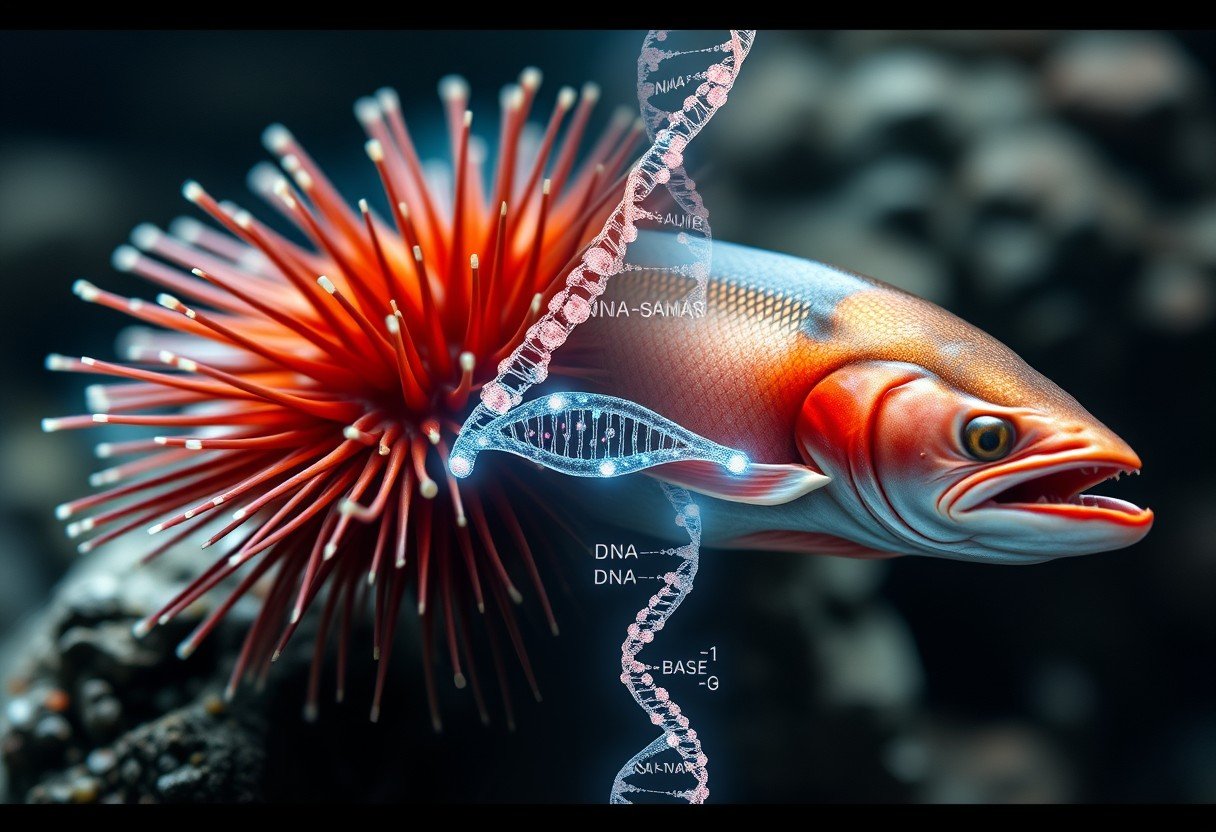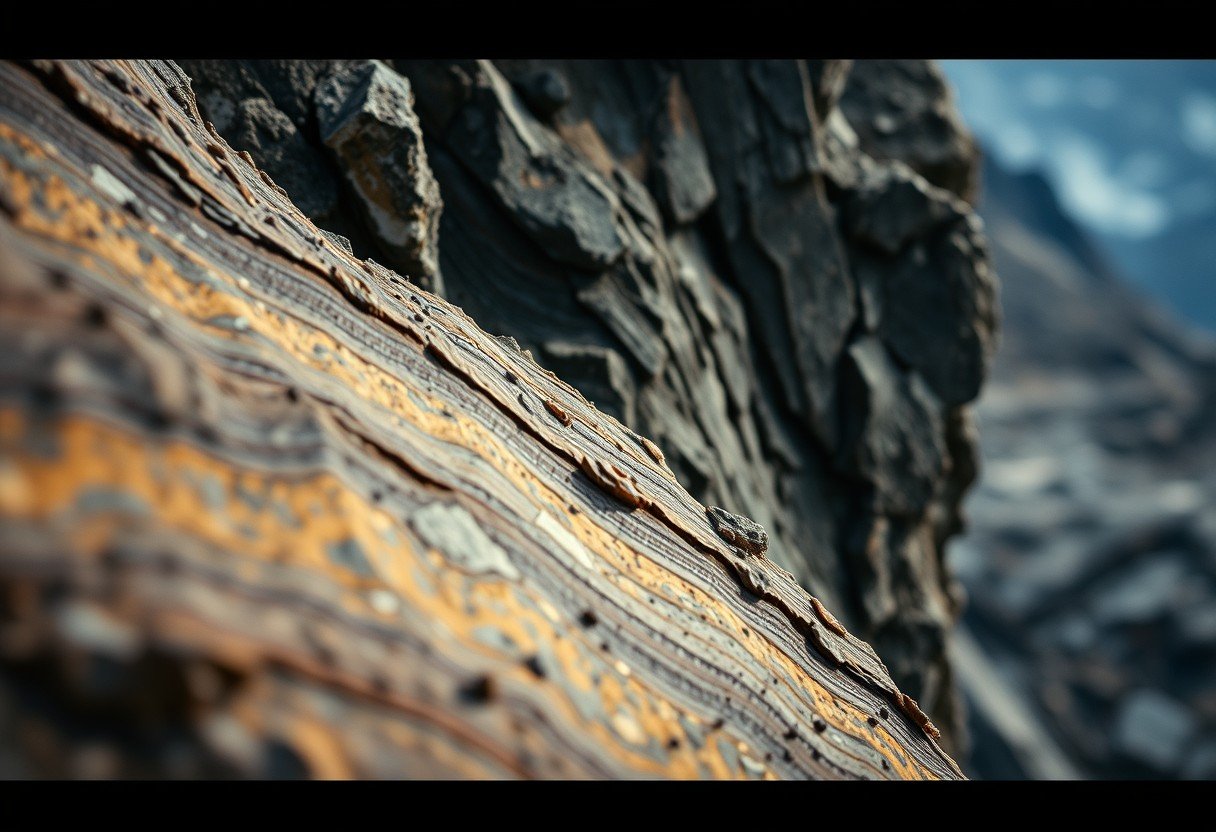Have you ever wondered what the DNA of a sea urchin has in common with a salmon? The answer lies in a fundamental principle of genetics discovered in the 1940s. This principle, known as Chargaff’s rules, provides a blueprint for DNA’s structure. We’ll explore how these rules apply to these two very different marine creatures and what it tells us about life itself.
What are Chargaff’s Rules in Simple Terms?
In the world of molecular biology, Chargaff’s rules are a cornerstone concept. They were established by a scientist named Erwin Chargaff, who made a groundbreaking discovery about the building blocks of DNA, which are called nucleotide bases.
There are four bases in DNA: adenine (A), guanine (G), cytosine (C), and thymine (T). Chargaff found that these bases pair up in a very specific way. In any double-stranded DNA molecule, the amount of adenine is always equal to the amount of thymine (A=T). Similarly, the amount of cytosine is always equal to the amount of guanine (C=G).
This rule is essential for the famous double helix structure of DNA. It ensures that the two strands of DNA can bond together perfectly, creating a stable molecule that can reliably store genetic information. This principle is universal, applying to nearly all life on Earth.
Does Sea Urchin DNA Follow These Rules?
When scientists examine the DNA of a sea urchin, they find a classic double helix structure, just like in humans and other complex organisms. A closer look at its chemical makeup reveals a clear pattern.
The base composition in sea urchin DNA perfectly aligns with Chargaff’s rules. Analysis shows a balanced, one-to-one ratio of adenine to thymine and guanine to cytosine. This balance is critical for the stability of the sea urchin’s genetic material.
This structural integrity influences how genes are controlled and expressed, which in turn affects the sea urchin’s development and its ability to adapt to its marine environment. The adherence to these rules provides a stable foundation for the complex processes of life.
What about the DNA of Salmon?
Just like the sea urchin, the DNA of a salmon is also organized into a stable double helix. This structure is vital for everything from the salmon’s growth and reproduction to its ability to fight off diseases.
An analysis of salmon DNA confirms that it too follows Chargaff’s rules. The amounts of A and T are approximately equal, as are the amounts of C and G. This balanced composition is not just for structure; it is also functional, ensuring that processes like DNA replication happen efficiently and without errors.
Any significant imbalance in these base pairs could lead to harmful mutations. Understanding this balance helps researchers appreciate the delicate interplay between an organism’s genetics and its success in the wild.
Comparing Sea Urchin and Salmon DNA Composition
While both species follow the fundamental A=T and C=G rule, their overall DNA composition shows interesting differences. This means the total percentage of A-T pairs versus C-G pairs can vary between species, reflecting their unique evolutionary paths.
| Base Type | Percentage in Sea Urchin DNA | Percentage in Salmon DNA |
| Adenine (A) | Approx. 32.8% | Approx. 29.7% |
| Thymine (T) | Approx. 32.8% | Approx. 29.7% |
| Guanine (G) | Approx. 17.2% | Approx. 20.3% |
| Cytosine (C) | Approx. 17.2% | Approx. 20.3% |
Even with these differences, some key similarities highlight a shared biological foundation:
- Rule Adherence: Both species strictly follow the A=T and C=G pairing rule, demonstrating its universal importance.
- Structural Integrity: The balanced ratios in both organisms ensure the stability of the DNA double helix.
- Evolutionary Conservation: This shared characteristic points to a common mechanism for storing and transmitting genetic information across diverse life forms.
The differences in the overall percentage of base pairs are significant. For example, a higher G-C content can make DNA more stable in certain environmental conditions, which might offer clues about the different challenges salmon and sea urchins face.
Why Do These DNA Differences Matter?
The variations in base composition between sea urchins and salmon are more than just numbers; they offer a window into their evolution and adaptation. These differences can influence everything from how genes are regulated to how a species responds to environmental stress.
These species-specific variations in DNA base composition may reflect distinct evolutionary adaptations. For instance, the specific percentage of G-C pairs in salmon DNA might be linked to adaptations for living in cold water or their complex life cycle involving both freshwater and saltwater.
Studying these differences helps scientists understand the unique evolutionary journey each species has taken. It enhances our knowledge of marine biology and shows how the fundamental structure of DNA can be fine-tuned to meet the demands of different environments.
What’s Next for Research on Marine DNA?
The confirmation that both sea urchin and salmon DNA adhere to Chargaff’s rules reinforces our understanding of basic genetics. However, it also opens up new questions for future research.
Scientists are encouraged to expand these studies to a wider range of marine species. By comparing the DNA base distributions across many different organisms, researchers can identify broader patterns related to evolution and environment. Future studies could investigate the functional consequences of these different base compositions, linking them to specific traits like disease resistance or reproductive strategies.
This line of inquiry can deepen our understanding of biodiversity and the incredible genetic mechanisms that drive the evolution of life in our oceans.
Frequently Asked Questions about Chargaff’s Rules
What exactly are Chargaff’s Rules?
Chargaff’s Rules state that in any sample of double-stranded DNA, the amount of adenine (A) equals the amount of thymine (T), and the amount of cytosine (C) equals the amount of guanine (G).
Do all living things follow Chargaff’s Rules?
Yes, the DNA of almost all organisms on Earth, from bacteria to plants to animals, follows Chargaff’s Rules. This highlights a shared, ancient mechanism for storing genetic information.
Why is the 1:1 ratio of base pairs important?
This ratio is crucial for the structure and stability of the DNA double helix. The specific pairing of A with T and C with G allows the two DNA strands to bond together correctly, protecting the genetic code from damage.
If both salmon and sea urchins follow the rules, why is their DNA different?
While the pairing rule (A=T, C=G) is the same, the overall percentage of A-T pairs versus C-G pairs can differ between species. This overall base composition is a unique characteristic that reflects a species’ evolutionary history.









Leave a Comment